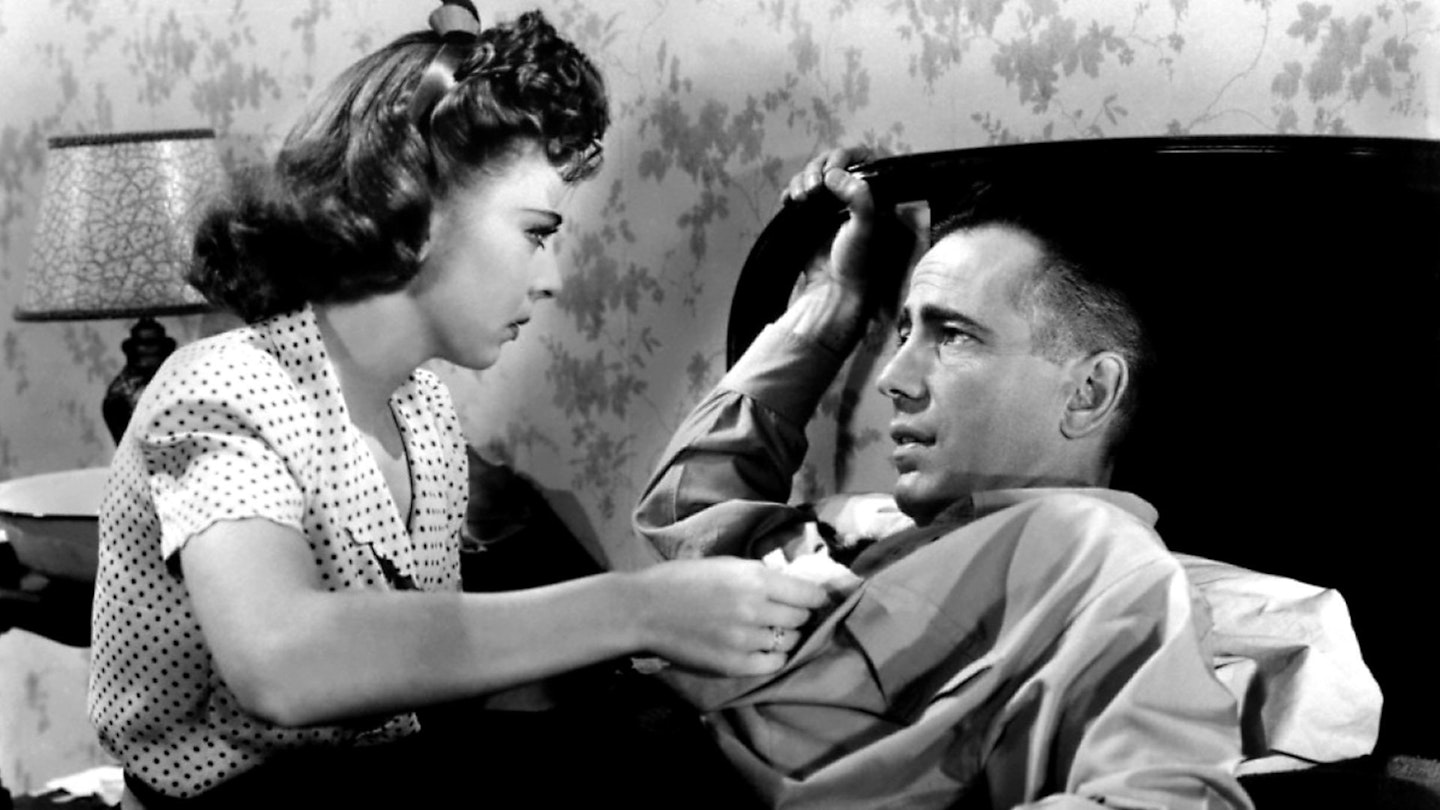Directed by Raoul Walsh, scripted by John Huston from W.R. Burnett’s novel, High Sierra is the last of a gangster cycle inspired by the exploits of John Dillinger, Bonnie and Clyde and other Depression era stick-up artists. Bogart, shining in his first lead role, is made up to look older than his years, stressing that this type of gangster is becoming as outmoded as the Western outlaws they have supplanted.
Though a few Cagney movies, particularly Angels With Dirty Faces and The Roaring Twenties (in which Bogart plays secondary hoods who get shot), had presented gangster heroes redeemed by self-sacrificing death, High Sierra is among the first films in which a criminal is presented as admirable because he is a professional – good at his job, and impatient with the loose cannon tearaways (Arthur Kennedy, Cornel Wilde) he has to work with. Earle has a Cagney-like streak of respect for decency, financing an operation to fix the crooked ankle of an innocent girl (Joan Leslie), but this doesn’t turn out well: in a marvellously uncomfortable scene, the cured Leslie becomes a selfish, brittle tart with a thirty-year-old, slick-moustached divorcee boyfriend. Regular folks may have enviable security, but aren’t worthy of respect. Earle forms relationships only with Pard, a dog who turns out to be a jinx (the thug-and-his-dog sentimentality is undercut because Pard finally gets Earle killed), and ‘taxi dancer’ Marie (Ida Lupino, top-billed), ‘who has more nerve than most men’.
